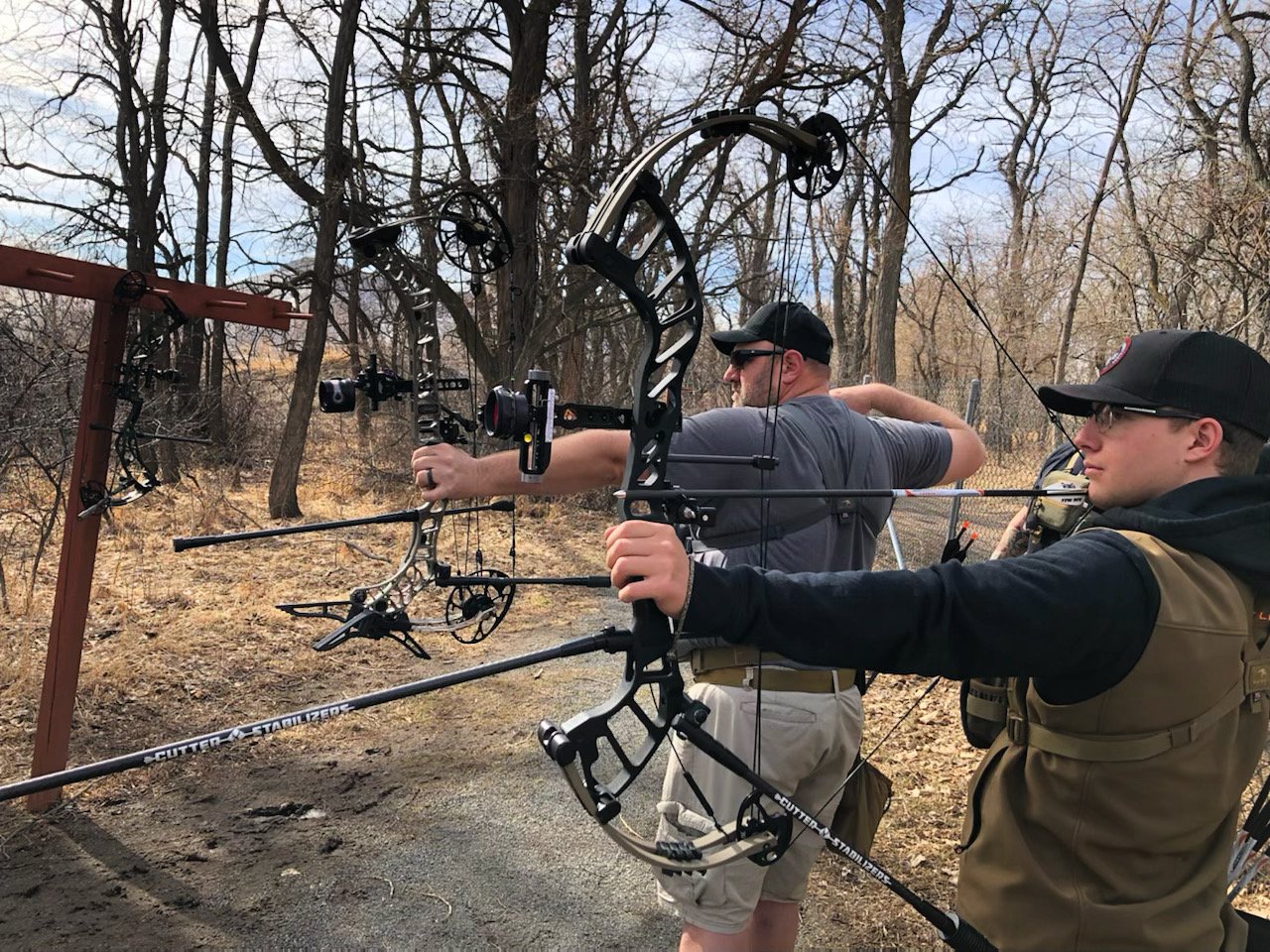Maximize Your Archery Accuracy With These Bow Stabilizer Methods
One critical element that can significantly affect your efficiency is the correct application of bow stabilizers. Whether you are a skilled archer looking to refine your abilities or a novice excited to improve your precision, mastering these bow stabilizer strategies might be the trick to striking your mark with unmatched uniformity.
Benefits of Making Use Of Bow Stabilizers
Utilizing bow stabilizers can significantly improve an archer's precision and total performance by minimizing bow torque and resonance. In addition, bow stabilizers moisten resonance, which not just boosts the comfort of capturing yet also avoids the bow from leaping upon release, therefore helping in maintaining appropriate goal.
Additionally, bow stabilizers can assist in holding the bow consistent, specifically during windy problems or when shooting from longer distances. The included weight at the front of the bow offers stability and equilibrium, permitting the archer to concentrate on aiming without the interruption of bow activity. In general, the benefits of making use of bow stabilizers extend past just precision, boosting the archer's experience and efficiency in numerous shooting scenarios.
Choosing the Right Bow Stabilizer
Selecting the appropriate bow stabilizer is critical for enhancing your archery equipment and boosting shooting performance. Larger stabilizers can help reduce bow torque and soak up even more resonance, leading to a steadier aim.

Lastly, take into consideration the style of the stabilizer. Some stabilizers feature adjustable weights or dampeners that allow you to customize the balance and feeling of your bow. Eventually, choosing the appropriate bow stabilizer involves locating a balance between weight, size, layout, and product to boost your capturing precision and overall performance.
Appropriate Installment Methods
To make certain optimal efficiency and safety in archery, understanding appropriate installment techniques for your bow stabilizer is vital. The first action in setting up a bow stabilizer is to determine the appropriate placement on your bow. A lot of stabilizers are affixed to the front of the riser, listed below the grip, to aid counterbalance the weight of accessories such as views and quivers. Ensure that the stabilizer is not conflicting with various other parts or impeding your capturing form.
Next, securely attach the stabilizer to the bow using the ideal mounting hardware. It is vital to tighten up the stabilizer well to prevent any kind of wobbling during shots. Some stabilizers come with adjustable weights that can be included or eliminated to adjust the balance of your bow. Experiment with different weight arrangements to locate the ideal balance that fits your capturing design.

Readjusting Stabilizer Weight and Length
After making sure the correct installment of your bow stabilizer, the next action involves adjusting the weight and size to enhance its performance in boosting archery precision. The weight of the stabilizer plays an important duty in minimizing bow activity throughout the shot cycle.
A longer stabilizer can offer greater stability by enhancing the distance between the bow and the weight at the end of the stabilizer. Alternatively, a shorter stabilizer provides much more ability to move and may be favored by archers that value agility and quick motions throughout capturing.
Advanced Stabilizer Tuning Tips
Achieving optimal bow security and accuracy in archery requires a nuanced More hints approach to sophisticated stabilizer adjusting. Advanced stabilizer tuning includes fine-tuning various elements to improve the bow's balance, reduce vibration, and improve overall accuracy. One essential technique is to trying out various stabilizer arrangements, including side-bar and back-bar configurations, to find the perfect equilibrium in between stability and ability to move for your shooting style. bow stabilizer. In addition, adjusting the angle and positioning of the stabilizer can have a substantial influence on how the bow responds upon launch.
An additional crucial element of advanced stabilizer tuning is enhancing the damping residential or commercial properties of the stabilizer system. Discovering different products for the stabilizer construction, such as carbon fiber or light weight aluminum, can additionally affect the bow's performance by changing its weight distribution and stiffness.
Conclusion
In conclusion, optimizing archery precision can be achieved with the appropriate choice, installation, and change of bow stabilizers. By comprehending the benefits of using stabilizers, selecting the right one, and fine-tuning its weight and size, archers can boost their capturing accuracy. Using advanced adjusting methods can additionally boost security and consistency in arrowhead flight. Generally, including bow stabilizers right into archery practice can cause improved efficiency and enhanced accuracy.
Using bow stabilizers can substantially enhance an archer's precision and overall efficiency by minimizing bow torque and resonance. Longer stabilizers give better stability and balance, specifically for long-distance capturing, while much shorter stabilizers supply more adaptability and are simpler to navigate in limited spaces (bow stabilizer). Carbon find here fiber stabilizers are light-weight and resilient, while light weight aluminum stabilizers are robust and provide outstanding resonance dampening
A longer stabilizer can provide greater security by enhancing the range between the bow and the weight at the end of the stabilizer.Another critical element of sophisticated stabilizer tuning is optimizing the damping residential or commercial properties of the stabilizer system.
 Emilio Estevez Then & Now!
Emilio Estevez Then & Now! Michael Bower Then & Now!
Michael Bower Then & Now! Michael Oliver Then & Now!
Michael Oliver Then & Now! Dolly Parton Then & Now!
Dolly Parton Then & Now! Ryan Phillippe Then & Now!
Ryan Phillippe Then & Now!